
by PRIDE Reading Program Admin | Jan 16, 2018 | A PRIDE Post, Dyslexia, Multisensory Teaching, Orton-Gillingham

Learning to read in English would be so easy for kids with Dyslexia if all similar-sounds were spelled the same. They aren’t. English is so hard to learn and has so many unfair and horrible spelling rules! Ugggh!
Many of us just read naturally. We understand that letters and letter combinations create words and sounds. Our brains just naturally register the words in print and we can read three or four words ahead of time and visually scan an entire text. We are also mentally able to pull words apart, separate them into syllables and apply all of those horribly unfair spelling rules easily and logically.
In the beginning…
Reading is complicated. There are 3 major stages that a child will need to go through in their lifetime to become a strong reader. This process involves word recognition, comprehension, fluency, and most importantly… motivation. The following outlines the key features of the reading process at each stage:
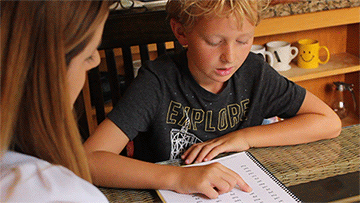
Stage 1 of the Reading Process: Decoding (Ages 6-7)
At this stage, beginning readers learn to decode by sounding out words. They comprehend that letters and letter combinations represent sounds and use this information to blend together simple words such as hat or dog.
Stage 2 of the Reading Process: Fluency (Ages 7-8)
Once children have mastered the decoding skills of reading, they begin to develop fluency and other strategies to increase meaning from print. These children are ready to read without sounding everything out. They begin to recognize whole words by their visual image and orthographic knowledge. They identify familiar patterns and achieve automaticity in word recognition and increase fluency as they practice reading recognizable texts.
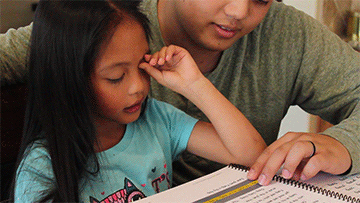 Stage 3 or the Reading Process: Comprehension (Ages 8-14)
Stage 3 or the Reading Process: Comprehension (Ages 8-14)
Children in this stage have mastered the reading process and are able to sound out unfamiliar words and read with fluency. Now the child is ready to use reading as a tool to acquire new knowledge and understanding. During this stage, vocabulary, prior knowledge, and strategic information become of utmost importance. Children will need to have the ability to understand sentences, paragraphs, and chapters as they read through text. Reading instruction during this phase includes the study of word morphology, roots, prefixes as well as a number of strategies to help reading comprehension and understanding.
Let’s keep it simple…
I’m not going to get too deep into the semantics of each reading phase and how it all works but Dr. G. Reid Lyon, a researcher in the field of neurology of dyslexia wrote a great article on children and the process of reading if you want to read it here.
So…now that you understand that there is a natural progression to reading, the big question is, will a child with dyslexia eventually learn to read naturally as they mature….
Will the reading come naturally for a dyslexic child at some point?
Nope. Reading does NOT and never will come naturally for a dyslexic child. A child with dyslexia does not wake up one morning and say, “I get it mom, it all makes sense now!” Nope. Unfortunately this isn’t going to happen.
This is just a fact. The International Dyslexia Association has a really good fact sheet on Dyslexia and the Brain. You can read about it here.
Children with dyslexia read and spell everything phonetically and do not apply spelling rules. For example, if they are spelling the word “said“ they will write “sed.” When reading the word “horse,” the dyslexic child will make a mental picture of that word and every time he or she approaches the word “horse” in text, that mental picture comes to life. The problem with this strategy is that when they get to a word that they are unfamiliar with, they have no coping mechanisms to attack that particular word. Yikes!
There is GREAT news for kids with Dyslexia!!!
Even though the reading and spelling does not come naturally for a child with dyslexia, this does not mean that they can’t learn to read and spell. Kids with Dyslexia are really bright kids, that just need a different approach to reading and spelling. They need to learn the letters and letter combinations in a very very structured, systematic and cumulative approach. They need lots of repetition and practice and they need a lot of positive encouragement. Children with dyslexia need 3 crucial elements to their reading instruction:
Multisensory Teaching
Orton-Gillingham Program
Parent Support
What does multisensory mean?
See it – Say it – Hear it – Move with it!
When taught with a multi-sensory approach, children will learn all the letters, letter combinations, sounds and words by using all of their pathways – hearing (auditory), seeing (visual), touching (tactile) and moving (kinesthetic).
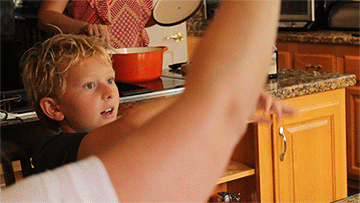 When learning the vowel combination ‘oa,’ for example, the child might first look at the letter combination on a picture of a GOAT, then close his/her eyes and listen to the sound, then trace the letters in the air while speaking out loud. This combination of listening, looking, and moving around creates a lasting impression for the child as things will connect to each other and become memorable. Using a multi-sensory approach to reading will benefit ALL learners, not just those with dyslexia.
When learning the vowel combination ‘oa,’ for example, the child might first look at the letter combination on a picture of a GOAT, then close his/her eyes and listen to the sound, then trace the letters in the air while speaking out loud. This combination of listening, looking, and moving around creates a lasting impression for the child as things will connect to each other and become memorable. Using a multi-sensory approach to reading will benefit ALL learners, not just those with dyslexia.
What is Orton-Gillingham?
The other significant component in helping a child with dyslexia learn to read and spell is utilizing an Orton-Gillingham approach. In Orton-Gillingham, the sounds are introduced in a systematic, sequential and cumulative process. The Orton-Gillingham teacher, tutor or parent begins with the most basic elements of the English language. Using lots of different multisensory strategies and lots of repetition, each spelling rule is taught one at a time. By presenting one rule at a time and practicing it until the child can apply it with automaticity and fluency, a child with dyslexia will have no reading gaps in their reading and spelling skills.
Children are also taught how to listen to words or syllables and break them into individual sounds. They also take each individual sounds and blend them into a words, change the sounds in the words, delete sounds, and compare sounds. For example, “…in the word steak, what is the first sound you hear? What is the vowel combination you hear? What is the last sound you hear? Children are also taught to recognize and manipulate these sounds. “…what sound does the ‘ea’ make in the word steak? Say steak. Say steak again but instead of the ‘st’ say ‘br.’- BREAK!
Every lesson the student learns in Orton-Gillingham is in a structured and orderly fashion. The child is taught a skill and doesn’t progress to the next skill until the current skill is mastered. Orton-Gillingham is extremely repetitive. As the children learn new material, they continue to review old material until it is stored into the child’s long-term memory.
It is like learning a foreign language.
Kids with Dyslexia need more structure and repetition in their reading instruction. They need to learn basic language sounds and the letters that make them, starting from the very beginning and moving forward in a gradual step by step process. Think of it as if your child is learning a foreign language for the first time. He or she needs to start at the very beginning, learn the pronunciation of each letter in the alphabet as well as all the different spelling and language rules related to the foreign language. This needs to be delivered in a systematic, sequential and cumulative approach. For all of this to “stick” the child will need to do this by using their eyes, ears, voices, and hands.
If you want to learn more about an Orton-Gillingham Dyslexia Reading Program click on the video below:
If you enjoyed reading this post, you might also enjoy reading, My child might have Dyslexia… what do I do?
Thank you so much for visiting my Blog today!
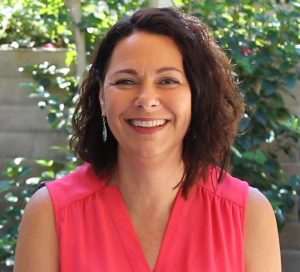
Karina Richland, M.A., developed the PRIDE Reading Program, an Orton-Gillingham program for struggling readers, based on her extensive experience working with children with learning differences over the past 30 years. She has been a teacher, educational consultant and the Executive Director of PRIDE Learning Centers in Southern California. Please feel free to email her with any questions at info@pridelearningcenter.com. Visit the PRIDE Reading Program website at https://www.pridereadingprogram.com

by PRIDE Reading Program Admin | Oct 2, 2017 | A PRIDE Post, Dyslexia
Do you worry that your child might have dyslexia? The warning signs are there. Your child is struggling with reading, writing and spelling. You might be using your intuition that something is wrong. What should you do?
Get a Diagnosis!
Diagnosis is the fundamental first step in successfully helping a child with dyslexia and the earlier, the better. It is never a good idea to wait or prolong testing. This will only put the child with dyslexia further behind. Children, who receive help early on, can catch up to their classmates. Later-identified children miss out on essential practice and miss out on an effective dyslexia remediation program during the crucial window of opportunity. So where do you go for a diagnosis… here are some suggestions:
- A licensed educational psychologist
- A Neurologist
- A Medical Doctor
- A Speech Pathologist
- The Special Education Department at a university or school district
Practice Reading A Lot!
Reading fluency comes from repeatedly practicing the same words over and over again so that the brain eventually identifies the words rapidly. Poor readers receive the least amount of reading practice although they need it the most. This is mostly because they avoid reading, read less than their classmates, and as a result fall progressively behind their peers in reading skills. With a proper dyslexia remediation program the student will be able to practice reading intensively and often. So how should your child with dyslexia practice reading a lot?
- Make your child read at least 20 minutes a day before they are allowed to get on any technology.
- Give your child materials that motivate them to read.
- Give them easy reading. Let them read below their grade level. Its about fun and practice, not torture.
- Get into the habit and routine of reading the same time each day.
Catch-up with an Intensive Reading Remediation Program!
A child who has dyslexia that is not identified until the third grade or later is already thousands of unlearned words behind the other readers. This is a gap that might never get closed without an intensive reading remediation program at this point. The best intervention is prevention in kindergarten or remediation beginning in first grade. After first grade it is just remediation year after year. And that’s a lot of catch up to do.
Reading instruction for the child with dyslexia must be delivered with great intensity. Children diagnosed with dyslexia are behind in their reading levels and for them to catch up with their classmates will need to make a big leap forward or else they will remain behind. Optimally, a child who is struggling with reading should be taught one-on-one and should receive this specialized reading instruction 2-3 hours five days a week. A larger group or less time will greatly undermine the possibilities of success. Use the long summer months to send your child to a summer Orton-Gillingham reading camp for intensive instruction. Summers are a great time to catch up and get ahead.
Make sure you find the Right Program with the Right Teacher!
A child with dyslexia will take in and process information differently and needs to be taught with a specialized program. The content must be a research-based scientifically proven method that is delivered with a sequential, systematic, cumulative and structured multisensory reading program. The Orton-Gillingham method, for example, is a perfect example of a reading approach that is proven to work for children with dyslexia. Orton-Gillingham uses a specific scope and sequence that works with kids with dyslexia and closes all reading gaps. It’s a really remarkable reading method. I recommend you check out The PRIDE Reading Program as the perfect program to teach a child with dyslexia. It comes with training videos and is really easy to implement. It is heavily scripted out, so you don’t need to be a certified teacher to use the program. Using the combination of the right program and the right instructor is the key to your child’s success.
A child with dyslexia who is not identified early may require as much as 100-200 hours of intensive instruction if they are going to close the reading gap. The longer that identification and effective reading instruction are delayed, the longer the child will require catching up. Fortunately, with the proper assistance and help, most students with dyslexia are able to learn to read and develop strategies to become successful readers.
Learn more about the New PRIDE Reading Program
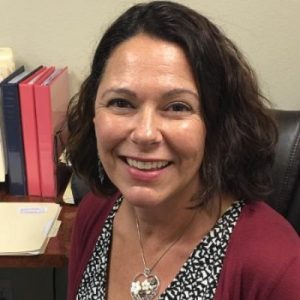
Karina Richland, M.A. is the Founder of Pride Learning Centers, located in Los Angeles and Orange County. Ms. Richland is a certified reading and learning disability specialist. She is also the author of the PRIDE Reading Program. Ms. Richland speaks frequently to parents, teachers, and professionals on learning differences, and writes for several journals and publications. You can reach her by email at info@pridelearningcenter.com or visit the PRIDE Learning Center website at: www.pridelearningcenter.com
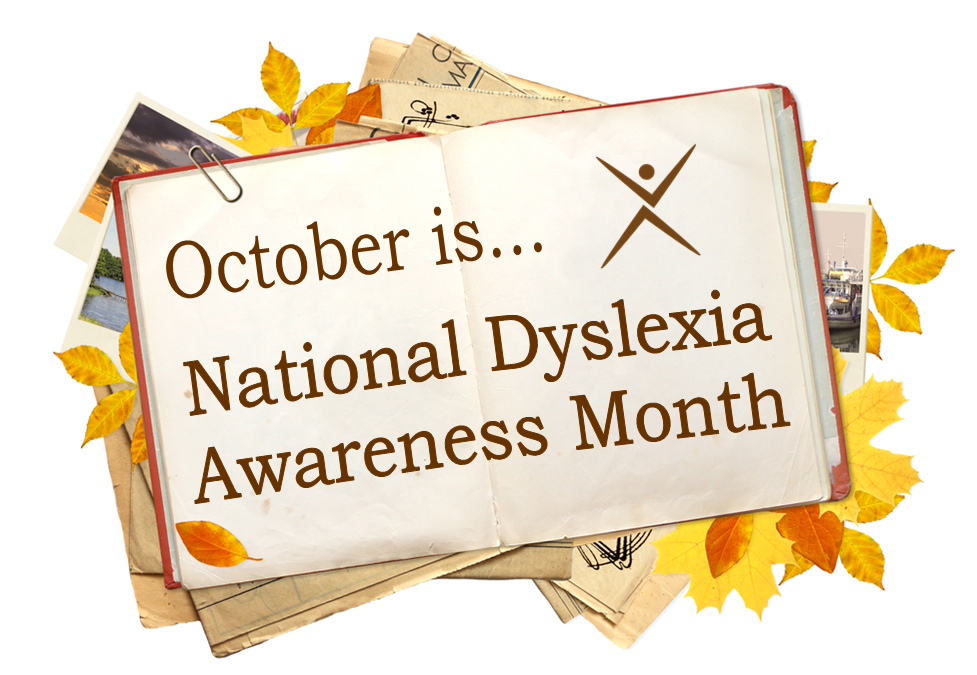
by PRIDE Reading Program Admin | Sep 29, 2017 | A PRIDE Post, Dyslexia
This October is National Dyslexia Awareness Month, and PRIDE Learning Centers is helping to spread the word!
Did you know that Dyslexia is estimated to affect some 20-30 percent of our population? This means that more than 2 million school-age children in the United States are dyslexic! We are here to help.
What is Dyslexia?
Although children with dyslexia typically have average to above average intelligence, their dyslexia creates problems not only with reading, writing and spelling but also with speaking, thinking and listening. Often these academic problems can lead to emotional and self-esteem issues throughout their lives. Low self-esteem can lead to poor grades and under achievement. Dyslexic students are often considered lazy, rebellious or unmotivated. These misconceptions cause rejection, isolation, feelings of inferiority, and discouragement.
The central difficulty for dyslexic students is poor phonemic awareness. Phonemic awareness is the ability to appreciate that spoken language is made up of sound segments (phonemes). In other words, a dyslexic student’s brain has trouble breaking a word down into its individual sounds and manipulating these sounds. For example, in a word with three sounds, a dyslexic might only perceive one or two.
Most researchers and teachers agree that developing phonemic awareness is the first step in learning to read. It cannot be skipped. When children begin to learn to read, they first must come to recognize that the word on the page has the same sound structure as the spoken word it represents. However, because dyslexics have difficulty recognizing the internal sound structure of the spoken word to begin with, it is very difficult for them to convert the letters of the alphabet into a phonetic code (decoding).
Although dyslexia can impair spelling and decoding abilities, it also seems to be associated with many strengths and talents. People with dyslexia often have significant strengths in areas controlled by the right side of the brain. These include artistic, athletic and mechanical gifts. Individuals with dyslexia tend to be very bright and creative thinkers. They have a knack for thinking, “outside-the-box.” Many dyslexics have strong 3-D visualization ability, musical talent, creative problem solving skills and intuitive people skills. Many are gifted in math, science, fine arts, journalism, and other creative fields.
Symptoms of Dyslexia
Preschoolers
- Late talking, compared to other children
- Pronunciation problems, reversal of sounds in words (such as ‘aminal’ for ‘animal’ or ‘gabrage’ for ‘garbage’)
- Slow vocabulary growth, often unable to find the right word (takes a while to get the words out)
- Difficulty rhyming words
- Trouble learning numbers, the alphabet, days of the week
- Poor ability to follow directions or routines
- Does not understand what you say until you repeat it a few times
- Enjoys being read to but shows no interest in words or letters
- Has weak fine motor skills (in activities such as drawing, tying laces, cutting, and threading)
- Unstable pencil grip
- Slow to learn new skills, relies heavily on memorization
School Age Children
- Has good memory skills
- Has not shown a dominant handedness
- Seems extremely intelligent but weak in reading
- Reads a word on one page but doesn’t recognize it on the next page or the next day
- Confuses look alike letters like b and d, b and p, n and u, or m and w.
- Substitutes a word while reading that means the same thing but doesn’t look at all similar, like “trip” for “journey” or “mom” for “mother.”
- When reading leaves out or adds small words like “an, a, from, the, to, were, are and of.”
- Reading comprehension is poor because the child spends so much energy trying to figure out words.
- Might have problems tracking the words on the lines, or following them across the pages.
- Avoids reading as much as possible
- Writes illegibly
- Writes everything as one continuous sentence
- Does not understand the difference between a sentence and a fragment of a sentence
- Misspells many words
- Uses odd spacing between words. Might ignore margins completely and pack sentences together on the page instead of spreading them out
- Does not notice spelling errors
- Is easily distracted or has a short attention span
- Is disorganized
- Has difficulties making sense of instructions
- Fails to finish work on time
- Appears lazy, unmotivated, or frustrated
Teenagers
- Avoids reading and writing
- Guesses at words and skips small words
- Has difficulties with reading comprehension
- Does not do homework
- Might say that they are “dumb” or “couldn’t care less”
- Is humiliated
- Might hide the dyslexia by being defiant or using self-abusive behavior
Adults
- Avoids reading and writing
- Types letters in the wrong order
- Has difficulties filling out forms
- Mixes up numbers and dates
- Has low self-esteem
- Might be a high school dropout
- Holds a job below their potential and changes jobs frequently
Treatment
The sooner a child with dyslexia is given proper instruction, particularly in the very early grades, the more likely it is that they will have fewer or milder difficulties later in life.
Older students or adults with dyslexia will need intensive tutoring in reading, writing and spelling using an Orton-Gillingham program. During this training, students will overcome many reading difficulties and learn strategies that will last a lifetime. Treatment will only “stick” if it is incorporated intensively and consistently over time.
Students who have severe dyslexia may need very intensive specialized tutoring to catch up and stay up with the rest of their class. This specialized tutoring helps dyslexic students become successful in reading, writing, spelling, grammar, and vocabulary. It also will help them with math, and word problems. Fortunately, with the proper assistance and help, most students with dyslexia are able to learn to read and develop strategies to become successful readers.

Karina Richland, M.A., developed the PRIDE Reading Program, an Orton-Gillingham program for struggling readers, based on her extensive experience working with children with learning differences over the past 30 years. She has been a teacher, educational consultant and the Executive Director of PRIDE Learning Centers in California. Please feel free to email her with any questions at info@pridelearningcenter.com.
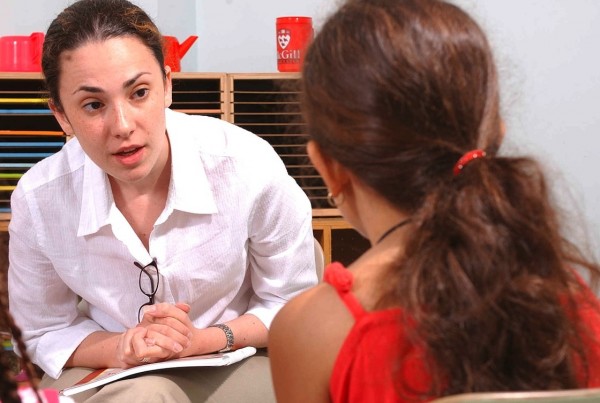
by PRIDE Reading Program Admin | Oct 16, 2016 | A PRIDE Post, ADHD, Dyslexia
The diagnosis of dyslexia is often missed by child psychiatrists, who are frequently asked to validate a diagnosis of attention deficit hyperactivity disorder (ADHD), generated from a psychological evaluation because ADHD is a fairly common disorder with a prevalence of 10% in the US, and because roughly 80% of children with ADHD respond to stimulant medication, the role of a child psychiatrist is often circumscribed to diagnosing and treating ADHD with medication. However, because the dyslexia/ADHD co-morbidity, i.e., “the parallel track diagnosis” of ADHD and dyslexia has been described to be in the range of 10% (Shaywitz, 1988), child psychiatrists often confuse the 20% population of children and adolescents who epidemiologically are not expected to respond to stimulant medications with children with disorders of dyslexia/ADHD comorbidity.
Bruce Pennington (1991) an established authority in the field of dyslexia has suggested that there is no robust two-way association between dyslexia and ADHD, i.e., that increased prevalence of dyslexia in children with ADHD is lacking in several studies, whereas there are increased rates of ADHD in dyslexic samples described. To translate this into a more comprehensive language, I quote my former teacher at UCLA the late Dr. Dennis Cantwell who said:
“When you hear horse hooves around the corner you should suspect the zebra, because if you don’t – you may miss the unicorn.”
Whenever I evaluate a child who has been referred for assessment of probable ADHD, I also include a screening instrument for dyslexia as part of the evaluation. Conversely, if a child who has been properly diagnosed with dyslexia is referred to me for further assessment, I assume that she/he may also have dyslexia/ADHD comorbidity. It is important to remember that although the diagnostic statistical manual (DSM) has trained us all into the habit of diagnosing by categories; many of these disorders are not necessarily categorical, instead present on a dimensional range. That is to say that a child may have mild, moderate or severe dyslexia, as well as the equivalent degrees of ADHD severity. A few additional points deserve to be emphasized on dyslexia and ADHD comorbidity:
1. If a child is diagnosed with dyslexia, there are no medication treatments proven to be efficacious. The treatment of dyslexia is complex. According to authors like Pennington and others it involves a phonic-based approach to reading because the problem of phonological coding is so central to the disorder. Examples of programs, which teach letter sound relations, are the Orton Gillingham, DISTAR, etc. The issue of remediation of spelling dyslexia seems to be fairly complex and several centers do not make spelling a direct target of remediation.
2. Authors like Pennington have advised against the idea of parents tutoring their dyslexic children, not just because they lack specific expertise but because there is a conflict between the two roles that make a parent-child tutoring situation too emotionally charged to be successful.
3. I believe a psychiatrist should treat whatever degree of inattention secondary to ADHD may exist on a child with dyslexia. While minimizing any potential side effects from stimulant medication, i.e. loss of appetite and weight, it is worthwhile optimizing inattention deficits through the prescription of medication on a child with dyslexia.
4. There are diagnostic boundaries that need to be monitored on a longitudinal basis. In other words, if the expectation of parents or teachers is that with remediation of inattention through medication management, deficiencies secondary to dyslexia will also fall into place, these assumptions have to be identified and corrected. This is often a set up for delaying the necessary treatment of a child with dyslexia. This delay is often painful to witness because the large majority of children with untreated dyslexia eventually become demoralized, some of them clinically depressed. I have seen in 15 years of practice, children with dyslexia who barely compensate for their deficiencies in an educational environment that is still very alphabetic so to speak, for example in the teaching of languages, (heavily relying on grammar). As time goes by, children with untreated dyslexia become school avoidant, and often resort to maladaptive patterns in order to compensate for loss of self-esteem.
For more information regarding dyslexia/ADHD morbidity or to have your child evaluated for a screening please feel free to contact Dr. Pablo De Amesti Davanzo below.
Learn more about the New PRIDE Reading Program
________________________________________________________________________________________________
Dr. Pablo De Amesti Davanzo, MD is Senate Emeritus of Psychiatry, University of California, Los Angeles and former National Institute of Mental Health (NIMH) Career Development Awardee. He completed his residency training in Psychiatry at Duke University in 1993 and his fellowship training in Child and Adolescent Psychiatry at UCLA in 1995. He is currently the psychiatrist of the Child and Family Guidance Center Northpoint Intensive-Outpatient Day Treatment Center in Northridge, CA. Dr. Pablo Davanzo can be reached by voicemail at his Brentwood office (310) 571-1519.

by PRIDE Reading Program Admin | Aug 30, 2016 | A PRIDE Post, Dyslexia
A parent is asking “Why don’t they test dyslexia in all children?”
My answer is that morally speaking, they should, but legally speaking, all schools are supposed to test children for learning disabilities such as dyslexia when there is a reason to do so. The reason to test dyslexia in a child can be as innocuous as a suspicion on the part of a professional teacher or staff member that something (perhaps) unknown prevents a particular student from learning.
Schools are supposed to act as required by law. There is no absolute requirement to test dyslexia in all children, so schools do not currently assess all students for dyslexia unless there is a particular reason to do so. When a parent, teacher or staff member believes that an assessment may be needed in an area of suspected disability, that belief provides a particular reason to ‘test’ or ‘assess’ whether a learning disability such as dyslexia is present. There are many reasons to believe that a particular child should be assessed for a learning disability.
Imagine being a teacher. You are staring into the faces of 20 eager students seated at their desks and looking at you expectantly. Each one is different. Each one looks different. Each one has a different name. Each one has a different background. Not one of them approach learning in the same way. Some of them have disabilities that impact learning, and all of them have the ability to learn if provided special education services and accommodations.
In my experience in a typical K-12 class, there will be an average of at least five kids in twenty who do not seem to focus on the lessons written on the board or textbooks, who write letters backwards, who seem unable to keep handwritten text organized and spaced properly on a page, who squirm, daydream, speak out of turn, fail to follow directions, become defiant, hate school, and/or distract the class from the lesson plan. Any of these characteristics can be indications that something is preventing each of these students from learning. Students demonstrating any of these behaviors could be candidates for testing dyslexia and assessment if there is a suspicion that a disability may be causing the behaviors interfering with learning.
A disability does not have to actually exist to trigger the law’s duty to ‘Child Find.’ It is enough if there is an area of suspected disability.
Although it is the school’s responsibility to implement ‘Child Find’ policies to identify and then remediate learning disabilities, savvy parents with advocacy experience will always want to assure in advance that everybody does the right thing, and follow-up afterwards. Here’s how we do it: put in writing all reasons for the concerns that a disability may exist. Explain that whatever the cause may be, it is impeding your child’s learning. Cite examples, and ask for a psycho-educational evaluation at the school’s expense to determine whether a learning disability is interfering with your child’s access to the educational curriculum. This will trigger a timeline, and the school will have a certain amount of time to respond. Deadlines do tend to motivate action, but a parent who is pro-active will not wait for the school to schedule an assessment; for many reasons it is advisable to take a child to a private psychologist who specializes in psycho-educational evaluations.
Some parents feel that psychologists employed by a school district have a first loyalty to the school district/employer and not to the child being tested. These parents feel there is a built-in bias or conflict of interest when the testing staff are employees of an entity which may have adverse interests to their child. There are nonprofit organizations and some private psychologists providing sliding fee scales depending on a family’s ability to pay for the private evaluation(s), which can become costly. Finally, the testing psychologist writes a report, or assessment, about a student – these should be written only after careful study, testing, observation, interviews with teachers, staff, parents, friends (if applicable) and review of student’s work product. No single method of evaluation is sufficient to determine whether a learning disability exists.
A parent can call for an individual education plan (IEP) meeting at any time by writing and delivering a letter to the appropriate school staff. Schools may fail in their ‘child find’ efforts, but no parent should! Any parent who believes something is interfering with her child’s ability to read, write, spell, and do math ought to have her child evaluated to see whether a learning disability exists, and find out what can be provided in the way of educational services and accommodations to allow this child to receive an appropriate education.
So, if you think your child has dyslexia, be a squeaky wheel and get a dyslexia test for your child. Nobody will do your child’s educational advocacy for you. For more information, ask someone with experience to teach you to advocate for your child’s educational needs. Be sure to bring every educational document in your possession, including IEP documents, testing from the past, teacher letters, etc.
It is with adult vigilance, follow-through and careful observation that all students who need it will be ‘found’ through ‘Child Find.’ That is, they are identified, assessed, and provided with the educational services and accommodations needed to learn effectively.
Learn more about the New PRIDE Reading Program
_________________________________________________________________________________________________
Nan Waldman, Esq. is a special education and disabilities consultant in Los Angeles with 20 years of experience in the field. She is also a parent and primary caregiver of a child with disabilities, a teacher, an advocate and a lawyer. Nan Waldman, Esq. can be reached by email at n.waldman.esq@gmail.com

 Stage 3 or the Reading Process: Comprehension (Ages 8-14)
Stage 3 or the Reading Process: Comprehension (Ages 8-14) When learning the vowel combination ‘oa,’ for example, the child might first look at the letter combination on a picture of a GOAT, then close his/her eyes and listen to the sound, then trace the letters in the air while speaking out loud. This combination of listening, looking, and moving around creates a lasting impression for the child as things will connect to each other and become memorable. Using a multi-sensory approach to reading will benefit ALL learners, not just those with dyslexia.
When learning the vowel combination ‘oa,’ for example, the child might first look at the letter combination on a picture of a GOAT, then close his/her eyes and listen to the sound, then trace the letters in the air while speaking out loud. This combination of listening, looking, and moving around creates a lasting impression for the child as things will connect to each other and become memorable. Using a multi-sensory approach to reading will benefit ALL learners, not just those with dyslexia.







